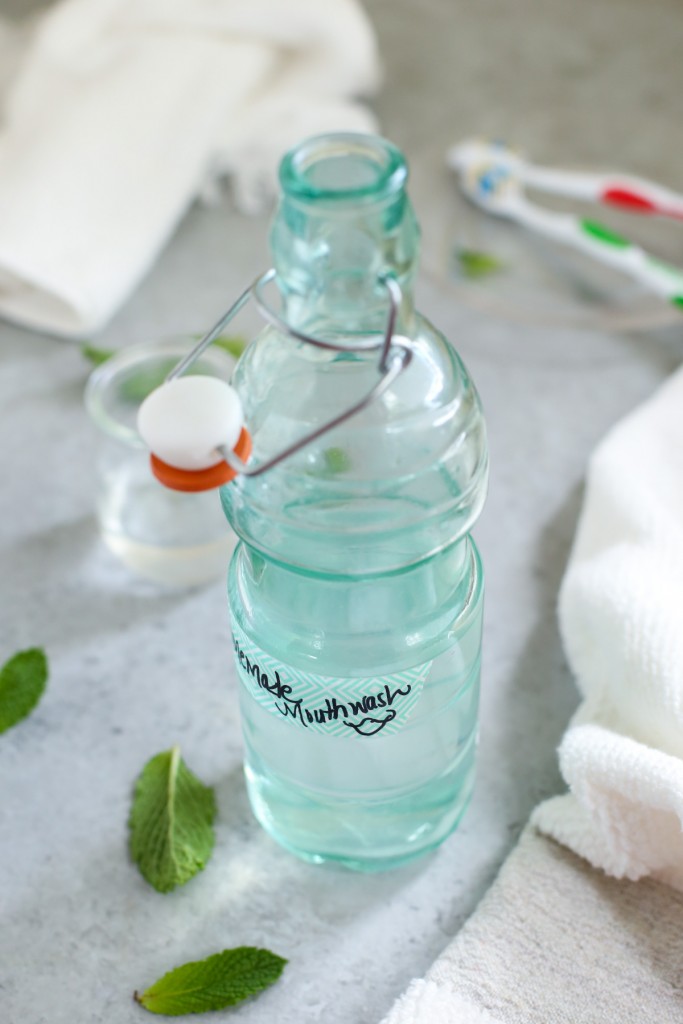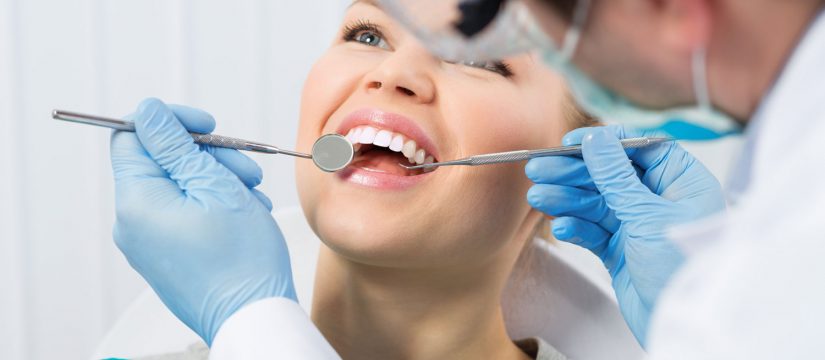In the article, we will consider how to rinse with gum inflammation.
Most of the funds intended for rinsing the oral cavity with inflammatory phenomena on the gums can be conditionally classified as antimicrobial (antiseptics) and anti-inflammatory. Preparations with antiseptic properties act directly on pathogenic agents that provoke the inflammatory process. Drugs with anti-inflammatory properties, in turn, do not affect bacteria, but only reduce the severity of inflammatory symptoms.
Means for rinsing with inflammation of the gums should be selected by a doctor.
In the treatment of periodontitis, gingivitis, the use of both types of drugs is allowed, however, antimicrobials are more effective.
In the treatment of the inflammatory process that occurred in the hole after tooth extraction, the use of antiseptic drugs, for example, Chlorhexidine, is indicated.
Antiseptic medicines
Most often, dentists recommend the use of drugs such as Miramistin and Chlorhexidine. They are professional medical devices that have a pronounced antimicrobial effect. After all, pathogenic microorganisms that cause the formation of tartar and plaque provoke gum disease.
"Chlorhexidine 0.05%" rinse
Instructions for use must be strictly followed. The drug is dispensed at pharmacy points without a prescription from a doctor. Its average cost is 20 rubles. It is one of the most effective agents, capable of exerting a pronounced antimicrobial effect. Rinsing with “Chlorhexidine” should be carried out after hygienic cleaning of the oral cavity, twice or three times a day for 1 minute. The drug can be used not only for inflammatory processes in the gums, but also after tooth extraction. What else is used to rinse with gum disease?
Miramistin
It has a concentration of the active component of 0.01%, in pharmacies it is released freely, without a prescription. The average cost of one bottle having a volume of 150 ml is approximately 200 rubles. "Miramistin" in terms of severity of antimicrobial effects is somewhat inferior to "Chlorhexidine", however, in contrast to it, it can act on herpes viruses. In this regard, Miramistin for rinsing the mouth is allowed for use in the treatment of herpetic stomatitis.
Can you rinse your mouth with hydrogen peroxide?
Do not use hydrogen peroxide to rinse your mouth. The use of this drug in the treatment of gum disease is possible, but only as an element of complex therapy and only at the dentist's appointment. Use it as the main therapeutic drug should not be. This tool can be used when washing a periodontal pocket. To do this, the peroxide is collected in a syringe, then the sharp edge of the needle is broken off, injected into the cavity of the periodontal pocket, and rinsing is performed under pressure. This allows you to wash the pus and the entire infection.
Undesirable consequences
Such a procedure should not be carried out independently, since attempts can cause undesirable consequences. Rinsing the mouth with hydrogen peroxide will be completely useless. When rinsing, peroxide is not able to get into the pockets - only the mucous membranes are washed. In addition, after dilution, peroxide loses its properties, its concentration should be 3%.
What else can rinse with gum disease?
Anti-inflammatory drugs
Anti-inflammatory drugs, as a rule, are able to have a slight antiseptic effect on pathogens, however, they can effectively affect some stages of inflammatory processes, thereby reducing the severity of inflammatory symptoms.
How to rinse the gums with inflammation? Folk remedies will be considered below.
It is important to take into account that most of the anti-inflammatory herbal products contain alcohol, which is used in the production process for extraction.
- "Stomatophyte". Instructions for use indicate that it is a highly concentrated infusion of medicinal plants. Its use is recommended as an element of the comprehensive treatment of periodontitis, gingivitis. Use the product for up to 2 weeks. The drug immediately before use is diluted with water in a ratio of 1: 5. The drug contains alcohol. This is also confirmed by the instructions for use with Stomatophyt. From drugstores dispensed without a prescription. The average cost of a bottle containing 100 ml is 200 rubles.
- Chlorophyllipt. When rinsing the mouth, you can use "Chlorophyllipt" in the form of an alcohol solution. Before use, the medicine must be diluted with pre-boiled warm water. The drug got its name due to its active component - the plant pigment chlorophyll, which is extracted from the leaves of eucalyptus. However, some experts recommend the use of other anti-inflammatory drugs, since the effect of "Chlorophyllipt" in comparison with them is negligible. The drug contains alcohol. The average cost of a 300 ml bottle is about 300 rubles.
- Tantum Verde. It contains benzidamine hydrochloride, which is a non-steroidal anti-inflammatory drug. When applied, it has a pronounced effect. The manufacturer produces in several pharmacological forms - a solution intended for rinsing, tablets, spray. The solution "Tantum Verde" immediately before use must be diluted with water in a ratio of 1: 1. The average duration of therapy is 10 days (with three times a day). The approximate cost of a bottle containing 120 ml of solution is at the level of 350 rubles. The drug contains alcohol. Many people wonder what herbs to rinse your mouth with gum disease?

Herbal conditioners, infusions for gums
You can prepare mouthwash solutions yourself. To do this, use plant herbs with anti-inflammatory effect. It can be chamomile, eucalyptus, sage. All these plants are able to reduce the severity of the inflammatory process. But it should be borne in mind that the solutions prepared on their basis will be saturated with a large number of pigments that can quickly adhere to the teeth. At the same time, a film forms on the tooth surface, to which pathogenic microorganisms easily attach. As a result, the volume of hard dental deposits and soft plaque on the teeth may increase. The most dubious herbal remedy used to prepare the solution is oak bark. The infusion on the oak bark contains the most tannins and pigments. Under their influence, the teeth will darken quite quickly.
How to rinse your mouth with chamomile for gum disease?
For this, an infusion is used. To prepare such a product, pour 2 cups of water in an enameled dish. Then add 7 tbsp. l dry chamomile flowers and soak in a water bath for 15 minutes. The liquid should be cooled, filtered, squeezed and add water to its original volume. Dissolve 4 tsp. honey and rinse your mouth 4-5 times a day.
Alternative to herbs
An alternative to decoctions of herbs prepared at home can be the pharmacy antiseptics described above and anti-inflammatory drugs, as well as specially developed elixirs based on medicinal plants. Such rinses contain extracts from medicinal herbs and at the same time there are no pigment substances. Thus, they are safe for teeth. You can use them on an ongoing basis, throughout the year. The only condition is the absence of antibacterial additives in the rinse aid, for example, triclosan.
Toothpastes
Currently, there are also excellent toothpastes with an anti-inflammatory effect, incorporating highly effective components, including those of plant origin. Such pastes are a great addition to the anti-inflammatory and antiseptic mouth rinses. Such pastes help to cope with the swelling of the gums, their bleeding.
Gargling with soda for gum disease
Soda is the most affordable, simple, safe, effective tool, on the basis of which you can prepare medicinal rinses that relieve pain after several uses. Preparation: for one glass of water - one teaspoon of soda. Stir well. For a quick effect, you need to use the tool every hour, for fixing - every three hours. In general, the procedure can be carried out for three consecutive days.
With gum disease, you can rinse your mouth with salt .
Cooking:
- A glass of warm water.
- 2 tsp salt.
- Mix.
- The solution is ready - you can start rinsing.
Cases in which rinsing is ineffective
Rinsing the mouth with the use of antiseptic drugs for inflammatory conditions on the gums are exclusively auxiliary means, they cannot be used for independent therapy.
As a rule, gums become inflamed with the development of two diseases:
- Periodontitis It is an inflammatory disease, which is characterized by the appearance of a purulent inflammatory focus at the top of the tooth root. Periodontitis develops as a result of untimely cured pulpitis, caries. It may be accompanied by the appearance of swelling in the projection of the root of the affected tooth or fistula with purulent discharge. Quite often, patients are interested in what means to use for rinsing if the gums hurt and swell. However, rinsing the mouth with periodontitis will not give a result, since the infectious focus is located deep in the bone tissue. In some cases, low efficiency can be achieved by using baths based on soda and salt. They help to draw out pus and inflammatory infiltrate, however, therapy should not consist in the use of this remedy alone.
- Periodontitis, gingivitis. They are inflammatory gum diseases , manifested by the development of symptoms such as bleeding, soreness, cyanosis, gum reddening, the appearance of halitosis, tooth mobility, atrophic changes in bone tissue near the teeth, and the release of pus from periodontal pockets. The main reasons for the development of periodontitis and gingivitis are hard dental deposits and a microbial soft coating on the teeth. Thus, we can say that these inflammatory diseases appear with poor hygienic care of the oral cavity. Rinsing with antiseptics is indicated for the complex therapy of these pathologies, but it is important to understand that rinsing is exclusively an adjuvant and cannot be used for self-treatment. The main therapy is to remove deposits from the teeth. If deposits from the teeth have not been removed, then the use of antiseptics and anti-inflammatory drugs will slightly and briefly reduce the symptoms of the disease (swelling, bleeding), but it will return immediately after stopping the use of medicines.

The use of drugs for these diseases is quite dangerous, since the main symptoms of the pathology are masked, and inflammation progresses at this time.
It is important to understand that gingivitis in a mild form can quietly transform into a severe stage of periodontitis if the disease is not treated and the antiseptic rinses are used incorrectly.
How to rinse the mouth with gum disease correctly?
Rinsing recommendations
First of all, before using anti-inflammatory solutions and antiseptics, the cause of the disease should be eliminated - dental deposits. A dentist can do this by applying a variety of techniques, for example, using ultrasound. After the deposits have been removed, the dentist will carry out the procedure of washing periodontal pockets using hydrogen peroxide and apply an anti-inflammatory gel to the gums.
Only after removing deposits on the teeth, the dentist will prescribe anti-inflammatory drugs for home rinsing. Home therapy, as a rule, consists in the use of anti-inflammatory gels, antiseptic rinses, antibiotics (for severe forms of the disease).
Only an integrated approach to the treatment of diseases of the oral cavity will get rid of the disease completely.